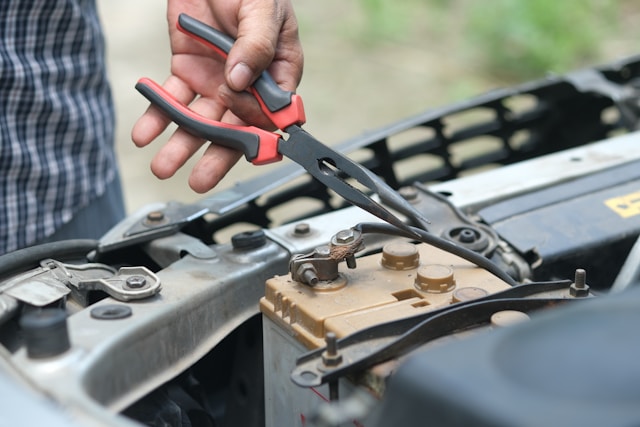All opinions are mine and mine alone.
If you’re a driver, any vehicle you own and use will require you to carry out regular checks. Ensuring it’s a road worthy automobile is key to keeping the costs low and avoiding a breakdown while you’re out and about. Vehicle care is always safest when it’s preventative!

That’s why you should carry out the checks below on a monthly basis. It’s better to be safe than sorry when it comes to road travel, and the more time you spend on vehicle care, the better it’s going to perform.
Strength of the Brakes
The brakes are quite possibly the most important element in a car. Check the strength and resilience of these at least once a month.
You’ll want to inspect the brake pads, which can be seen on a removed wheel. If you check the other side after removal, you should be able to see the pads attached round the edge. From here you can see the thickness. If you suspect they’re thin or have worn down – the legal limit is 3.2mm – head to an auto shop and get them changed.
Otherwise keep an eye on your dashboard lights and wait for the brake symbol to pop up.
Integrity of the Windshield
The windshield is one of the biggest parts of your car. If it gets damaged, it could be a serious safety concern, especially if you’re driving at a high speed and something hits the screen.
That’s why you should give it a visual check at least once a month; if there’s a chip there, even a tiny one, it could soon turn into a crack.
Take your car in for windshield chip repair as soon as you notice there’s an issue. You really don’t want to have to pay for a full glass repair, and you certainly don’t want to deal with the panic of a crack spreading across the screen in front of you!
Fluid Levels
There are quite a few different fluids in your car, the most obvious of which is the gas you use to fuel it. It’s easy to check if this is low, as the gauge on your dashboard will tell you so immediately.
However, fluids like the motor oil need more of a manual inspection; you’ll find the dipstick in the engine where the oil level will be marked clearly. If you don’t know how to read a dipstick lever, just keep in mind that the one near the bottom is ‘minimum’.
You’ll also need to check on your brake fluid and coolant levels, both of which are inside the hood too. Make sure your vehicle is off when you do so and the car has been sat parked for some time. This way you won’t burn your hands and the fluids will have returned to a readable state.
If you own a vehicle, ensure it’s safe to be behind the wheel. Once a month is best, but checking at least twice a year is OK.



Speak Your Mind